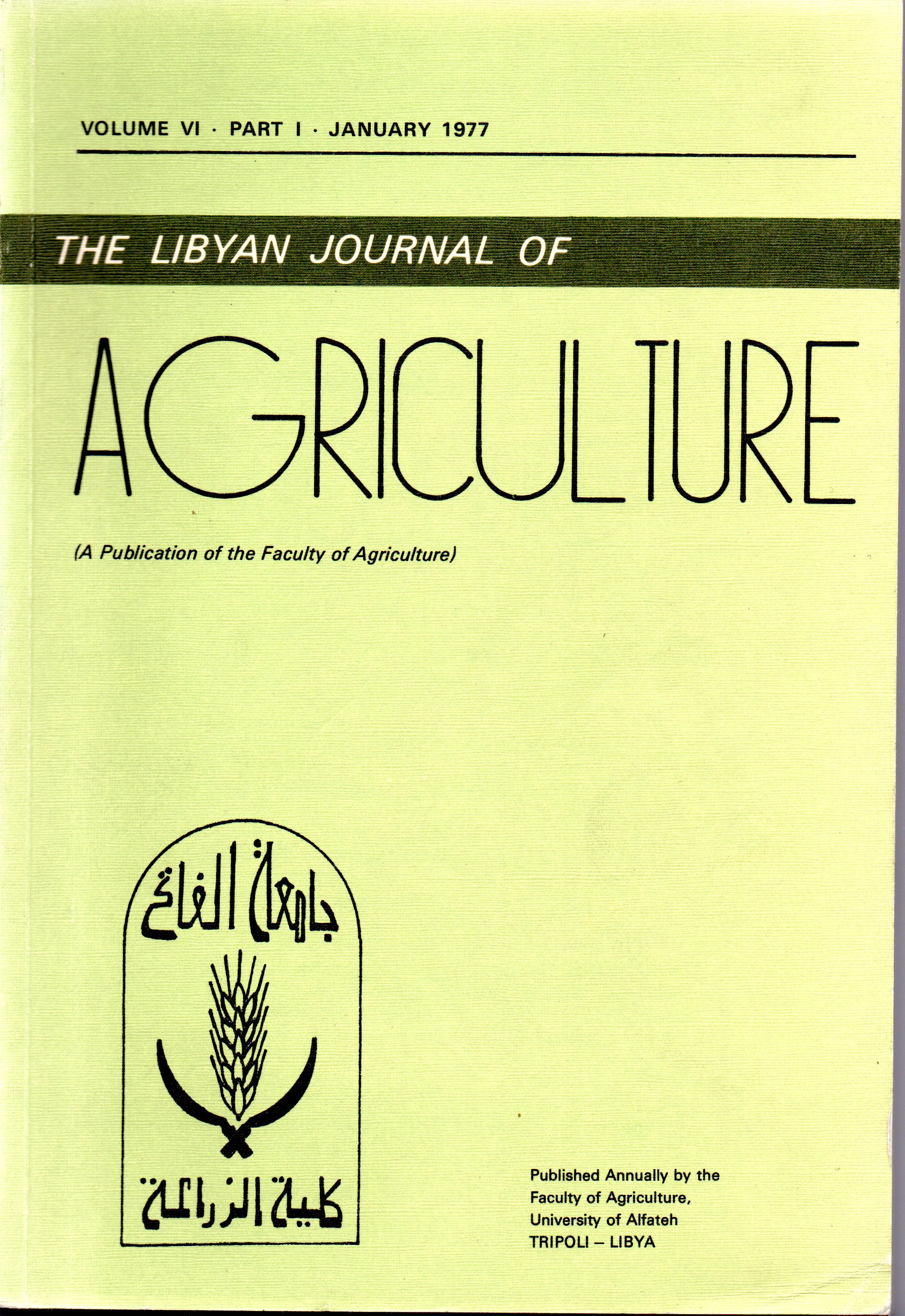The Influence of Herbicides on Major Field Crops in the Newly Reclaimed Areas of Egypt III. Effect of Recommended Application Methods of Herbicides on Weed Seedlings Associated with Wheat, Cotton, Maize, and Rice.
Main Article Content
Abstract
A pot experiment was conducted at the Faculty of Agriculture Experimental Farm, Alexandria, in 1971, to test the visual effect of the herbicides: Atrazine, Linuron, Fluometuron, and Trifluralin on the weeds: jungle rice {EchinochloacoIonum, (L.) Link), barnyardgrass {Echinochloa crus-galli, (L.) Beauv.), pigweed {Amaranthus caudatus, L.), common purslane {Portulaca oleracea, L.), and yellow foxtail {Seiaria glauca, (L.) Beauv.). Moreover, the influence of Propanil and Molinate was investigated on jungle rice, barnyardgrass, and pigweed and 2,4-D on curly dock{Rumex dentatus, L.), annual sowthistle {Sonchus oleraceus, L.), black mustard {Brassica nigra, L.), and lambsquarters {Chenopodium album, Koch.). Five concentrations of each herbicide were applied. A numerical grade scale (from zero to ten) was used for facilitating the estimation of different herbicidal effects on weeds.
Results showed that the weeds treated with 1.0 liter/f (f = faddan = 4,200 m2) of Trifluralin, as a preplanting treatment, were satisfactorily controlled. All weeds (except pigweed and common purslane) sprayed with Fluometuron at the rates of 0.5 and 1.0 kg/f were satisfactorily controlled. However, these two weeds (pigweed and common purslane) were completely killed only by the highest rate (4.0 kg/f) of Trifluralin.
When Molinate was applied at the rate of 2.5 liters/f, as a postemergence treatment, it resulted in satisfactory weed control. The low concentration (1.25 liters/f) of this herbicide was not effective in weed killing.
The postemergence application of Propanil at the rate of 6.0 liters/f also resulted in satisfactory weed control.
The preemergence application of Atrazine at the rate of 1.0 kg/f was satisfactory in controlling weeds. The lowest concentration (0.5 kg/f) of this herbicide, however, was not effective.
The preemergence application of Linuron at the concentration of 1.0 kg/f was sufficient for killing all weeds under study.
Weed control was satisfactory when 2,4-D was sprayed at a rate of 1.0 liter/f as a postemergence treatment. On the other hand, the lowest rate of 0.5 Iiter/f did not kill the weeds completely but the higher concentration (4.0 liters/f) showed complete weed control.

